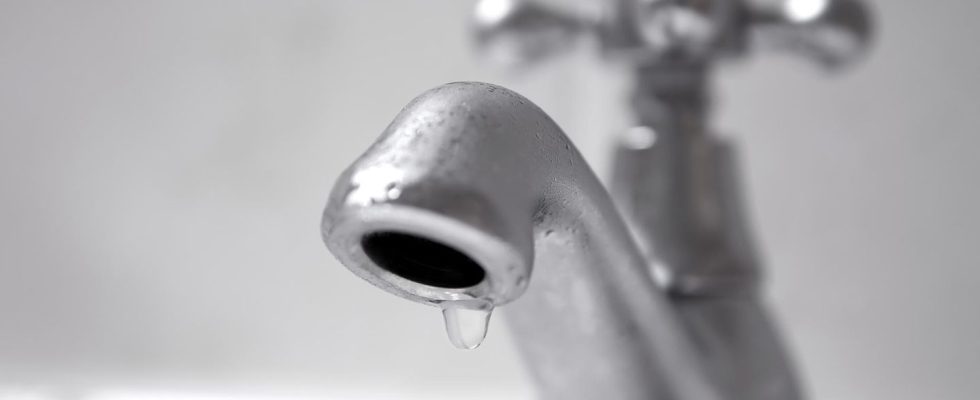White borders
Descale the faucet: This is how easy it is to remove annoying deposits
Limescale occurs wherever water flows. It’s annoying, but it can be removed.
© LisaValder / Getty Images
Limescale is not a sign of poor hygiene, but rather a component of groundwater: the more moisture evaporates from a surface, the more deposits become visible – especially on the tap. The white edges are not harmful to health, but they do provide a breeding ground for bacteria.
Lime, also known as calcium carbonate, is found in most rock and soil layers. Depending on how much lime there is in the earth through which our groundwater flows and ultimately comes out at the tap, the calcium carbonate content varies. This is also the reason why the water in some regions of Germany is particularly hard or low in lime – and the fittings in the bathroom have more or less deposits. In the end, however, it doesn’t matter how much limescale accumulates on the tap, because the fact is: with the right steps you can easily remove the white edges again. Regardless of how much limescale has accumulated on the fittings.
The quick method: Use tried-and-tested home remedies
Lime not only provides the ideal breeding ground for germs, but also sometimes ensures that less water flows through the tap – because the sieve inside also becomes clogged with deposits over time. In the end, the water sprays in all directions, except where it’s supposed to end up: in the sink. So that the water jet can flow straight again, you simply have to descale the sieve. To do this, proceed as follows:
- Unscrew the aerator, also known as the mixing nozzle or Aerator called, from the tap with your hand. It consists of three parts: the sieve, a sealing ring and a union nut. Alternatively, you can also use a pipe wrench, but in this case you should first place a cotton cloth around the tap so that you do not scratch the sensitive fitting.
- Place the individual pieces in a glass and fill it halfway with warm water so that all three parts are covered. Then add 50 milliliters Vinegar essence To do this, mix the two liquids and let the sieve, ring and nut soak in it for at least 15 minutes. Then rinse everything well and screw it back onto the tap.
But other home remedies have now also turned out to be true descaling miracles, such as: cola and aspirin – or even Amidosulfonic acid: The powder is also dissolved in water (around five grams per 500 milliliters of liquid) and briefly boiled. Then place the aerator in the hot water for five minutes Amidosulfonic acid solution.
An equally tried and tested home remedy is this citric acid: You can also use the powder dissolved in cold water to soak the aerator in its individual parts for 30 minutes. Meanwhile, you can dip a microfiber cloth into the water and clean the outside of the calcified fittings. The citric acid is also for Kettle suitable.
Last but not least, you can of course also use ordinary ones cleaning supplies Use against limescale to remove the white edges on the fittings. The external deposits do not hinder the water jet, but they still don’t look very nice and will continue to spread if they are not removed regularly.
And one more tip at the end: To avoid annoying limescale deposits in the future, you simply have to keep the tap dry – then no white edges can form.
You might also be interested in:
This article contains so-called affiliate links. Further information are available here.



